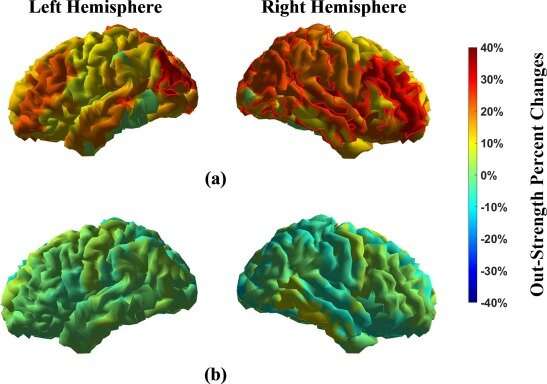This article has been reviewed according to Science X's editorial process and policies. Editors have highlighted the following attributes while ensuring the content's credibility:
fact-checked
trusted source
proofread
Analyzing brain signals to categorize different types of depression.

A new method of detecting anxious and non-anxious depression using brain signal processing has been developed by biomedical engineers at the University of Surrey.
The study results were shown to be roughly 91% accurate when patients had their brain activity monitored with their eyes closed.
Hesam Shakouh Alaei, lead author of the study from the University of Surrey, said, "Patients with anxious depression often have more severe symptoms and side effects with a higher resistance to treatment than patients with non-anxious depression. This is why it is critical to distinguish these two cohorts from each other."
"The hope is that these insights will help health professionals recognize anxious and non-anxious depression, and to treat accordingly."
Anxious depression is when someone exhibits a combination of severe symptoms of both depression and anxiety. It is critically important to diagnose and treat anxious depression quickly to mitigate the negative impact of the condition.
The research team recorded a five-minute resting electroencephalogram (EEG) in 15 patients with anxious depression and nine patients with non-anxious depression under eyes open and closed conditions.
Researchers estimated the electrical activity of 68 subcortical regions using a neuroimaging technique called exact low-resolution brain electromagnetic tomography (eLORETA), and the information flow within the brain regions were measured by a directed connectivity measure. The obtained brain network of patients with anxious depression and non-anxious depression was then classified by machine learning.
The findings showed how patients with anxious depression broadcast stronger connectivity in the right hemisphere with accuracy improving significantly with eyes closed.
The study has been published by Biomedical Signal Processing and Control.
More information: Hesam Shokouh Alaei et al, Directed brain network analysis in anxious and non-anxious depression based on EEG source reconstruction and graph theory, Biomedical Signal Processing and Control (2023). DOI: 10.1016/j.bspc.2023.104666


















